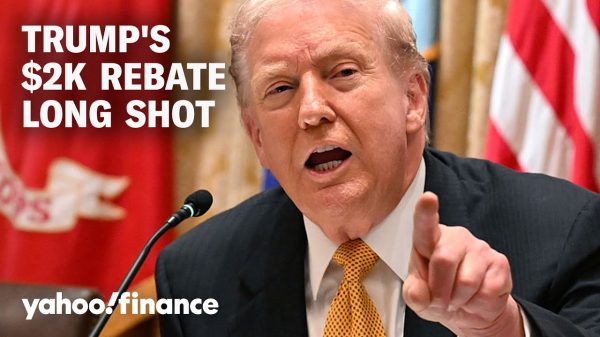About the author: William J. Bernstein is a retired neurologist, cofounder of investment management firm Efficient Frontier Advisors, and on the board of the John C. Bogle Center for Financial Literacy. He also has written a numerous books on investing, history, and social psychology. Read a section adapted with permission from McGraw Hill from Bernstein’s latest book, The Four Pillars of Investing: Lessons for Building a Winning Portfolio, below.
The highway of riches is strewn with another kind of hazard: the superstar manager pothole.
Human beings are wired to respond more to narratives than to dry numbers and facts. The financial media understands this. It’s one thing to absorb convincing academic evidence that investing in actively managed mutual funds is futile; it’s quite another to withstand the nearly constant drumbeat of media coverage of the riches turned out by winning investment funds.
So I’m going to tell you what the financial media doesn’t about its coverage of successful funds and managers: how these stories usually end.
The financial press is a shark circling in the water, constantly on the lookout for compelling narratives that will draw in eyeballs and advertisers, a voracious imperative that prevents financial reporters from serving up sensible information: purchase low-cost index funds and ignore every bit of news about the Federal Reserve or this week’s market gyrations—what journalist Jane Bryant Quinn labeled “financial pornography.” A useful rule of thumb is that financial headlines can be safely ignored, since anything that appears above the fold has already been impounded into prices. As Bernard Baruch supposedly said, “Something that everyone knows isn’t worth knowing.”
Among financial journalism’s 50 shades of investment porn is the super-star fund manager story. As we’ve already seen, at any given time, purely by chance, one fund or another will shoot out the lights, and the star-manager genre is a hardy financial media perennial. As I was writing the first drafts of this book, the superstar du jour was Cathie Wood, the charismatic founder of ARK Investment Management. The
ARK Innovation ETF
(ticker: ARKK) turned in a blistering 61% annualized return from 2017 to 2020, handily outpacing the 16% annualized return of the
S&P 500.
Wood’s earnest pronouncements about the riches to be had from companies that deploy “disruptive technologies” still fill the financial media.
Sadly, 2021 wasn’t as kind to her investors. That year saw the ARK Innovation ETF lose 24% (versus a 29% gain for the S&P 500). As usually happens, most of her investors were attracted by her spectacular returns and joined the party late in 2020-2021. A study by Morningstar analyst Amy Arnott, titled “ARKK: An Object Lesson in How Not to Invest,” calculated that while the annualized return of the fund since its October 2014 founding was a sizzling 28%, the average dollar invested in it only got a 9.8% return, versus an annualized 14% for the S&P 500.
Investors would have done well to have heeded the advice offered by Ms. Arnott in late 2021; in 2022, ARKK lost 67%, versus a 18% loss for the S&P 500. Not that warning signs weren’t flashing long before that. Before founding ARK Investment Management in 2014, Wood had worked as a fund manager at AllianceBernstein, where she managed multiple funds that on average under- performed. Before that, she co-founded Tupelo Capital Management, which flamed out in the tech crash of the early 2000s. Even if you weren’t aware of Wood’s less-than-stellar prior money management career, likely the result of high cost and frenetic trading, the lineage superstar fund manager genre serves up a generous dollop of George Santayana’s dictum, “Those who cannot remember the past are condemned to repeat it.”
In 1943 a Harvard-trained lawyer named Edward C. Johnson II, with almost two decades of investment experience under his belt, bought the moribund Fidelity Fund, which had been founded in 1930 as one of the nation’s first mutual funds. (The fund continues to operate to this day.) A few years later he founded the Fidelity Management and Research Company, the predecessor of today’s behemoth Fidelity Investments. In 1952 Johnson hired a young Chinese immigrant named Gerald Tsai, whose ability, drive, and vision landed him a berth as the manager of the Fidelity Capital Fund. (Johnson, something of a maverick, appointed Tsai as a sole manager, an unusual move in a business where committees ran funds.)
Tsai’s specialty was growth-stock investing. During the mid-1960s, growth companies—
Xerox,
IBM,
LTV, Polaroid—came into vogue. The Go-Go Years, as they became known, mirrored the internet bubble of the late 1990s and the recent infatuation with big tech firms, with valuations approaching those seen during the more recent enthusiasms.
Tsai was the prototypical “gunslinger,” in the argot of 1960s money management. He aggressively bought and sold stocks at a rapid pace and rang up attention-getting returns in the process. In the aftermath of the 1962 downturn, his Fidelity Capital Fund gained 68%. In 1965, it gained another 50%, versus only 12% for the S&P 500. Journalist John Brooks wrote that his trading was…so swift and nimble in getting into and out of specific stocks that his relations with them, far from resembling a marriage or even a companionate marriage, were more like those of a roué with a chorus line. Sometimes, to continue the analogy, the sheets were hardly cool when he was through with one and on to another.
Tsai viewed Johnson as a father figure, but when the personable young Edward C. Johnson III joined the firm, Johnson père told Tsai that he wasn’t in line to run the company, and Tsai left to found the high-octane Manhattan Fund.
At that point Tsai found himself in Randomovia. The years 1966-1967 were mediocre for the Manhattan Fund; in 1968, it flatlined. In the first half of the year, Manhattan lost 6.6% of its value while the market gained 10%. The Manhattan Fund was ranked 299th among the 305 funds tracked by mutual fund expert Arthur Lipper. Just before Manhattan bottomed, Tsai sold it to CNA Financial Corporation for $30 million.
What went wrong at the Manhattan Fund? The press spun a tale of speculation and hubris, followed by the inevitable rough justice—at least for the fund’s investors, some of whom had paid an upfront load of as much as 50%. Tsai eventually went on to a distinguished business career, ultimately becoming chairman of Primerica. But the media missed something far more important. The Manhattan Fund fell to what later became a pervasive destroyer of actively managed funds: asset bloat.
We’ve already come across this phenomenon with Wood. Let’s say you buy XYZ company stock. It is unlikely that anyone has noticed your order—millions of dollars’ worth of its stock trades every day, and your piddling order is absorbed without affecting XYZ’s price. On the other hand, if you have $50 million to invest in the shares of a small company, or even $1 billion to invest in a large one, you now have a problem: you cannot execute your purchase without inflating the stock price, since not enough stock is available at the current price to meet your needs. To attract sellers, you must offer a higher price. The opposite happens when you sell a large block of stock.
If the essence of successful trading is to buy low and sell high, a mutual fund grown elephantine with hot money is inexorably forced to do the opposite. The resultant drag on performance is known as “impact cost,” and it can crater a large fund’s return.
Tsai was the first in a long line of superstar fund managers to suffer from this phenomenon. When he started, Tsai’s reputation attracted $1.6 billion to his fund—an enormous amount for the time. His subsequent successful business career suggests that he may have had truly persistent skill before it ran into the inevitable brick wall of impact costs. In effect, Manhattan’s shareholders paid a “Tsai tax” each time he bought or sold, which destroyed the fund’s performance.
A recent impressive example of superstar fund manager collapse syndrome was William Miller, director of the Legg Mason Value Trust, and who bested the S&P 500 for 15 straight years between 1991 and 2005. By the early 2000s, I admitted to being impressed: After all, the odds of flipping 15 straight heads is just 1 in 32,768.
When reached for comment, Miller said the true odds of an actively managed fund beating the market in each of the 15 years during his win streak was 1 in 2.3 million. “Of course luck was involved, as all long streaks are a combination of luck and skill,” he said.
Then over the next three years, asset bloat, the fund’s 1.75% expense ratio, and Lady Luck all combined to almost completely wipe out the previous 15 years’ fantastic performance, barely nudging beyond the S&P 500 by 0.6% annually between 1991 and 2008. When Miller ascended from co-manager to sole manager of the fund, it held only $750 million in assets, and anyone who bought after 1993, at which point it held only $900 million, would have been better off in an index fund.
By 1998, the fund had ballooned out to $8 billion; over the next 10 years the fund lagged behind the S&P 500 by almost 4% a year. Worse was to come: By 2006, Mr. Miller had amassed more than $20 billion in assets, which he took over the cliff. In retrospect, Mr. Miller’s metronome-like outperformance between 1991 and 2005 mirrored that of the mortgage lenders or holders of mortgage-backed securities he overweighted—Countrywide, Bear Stearns, Washington Mutual—whose shares rocketed in the years leading up to the 2007-2009 global financial crisis. After 2006, that same overweighting of mortgage lenders went into full reverse, taking Mr. Miller and his hapless investors with them.
Write to [email protected]
Read the full article here









